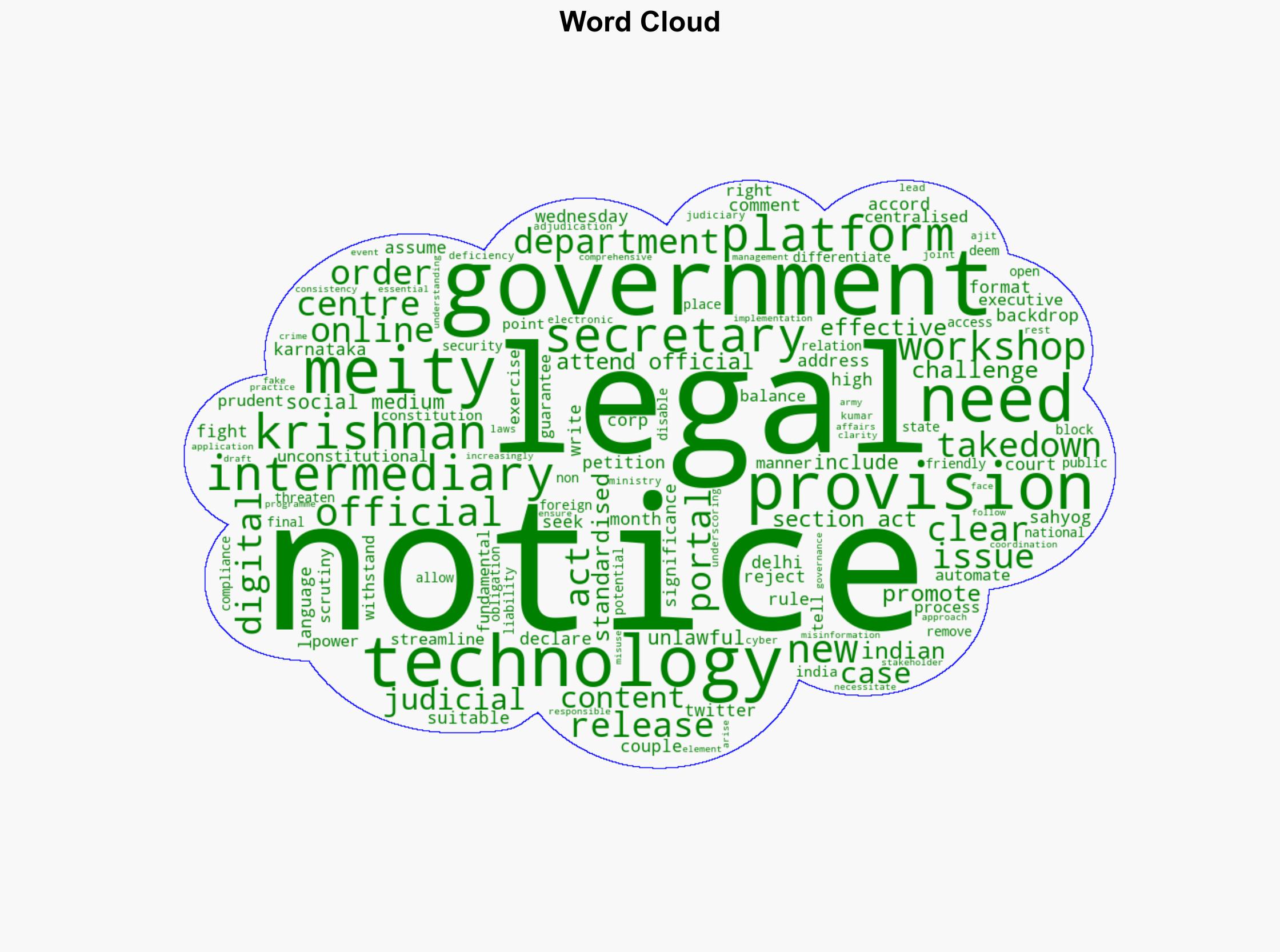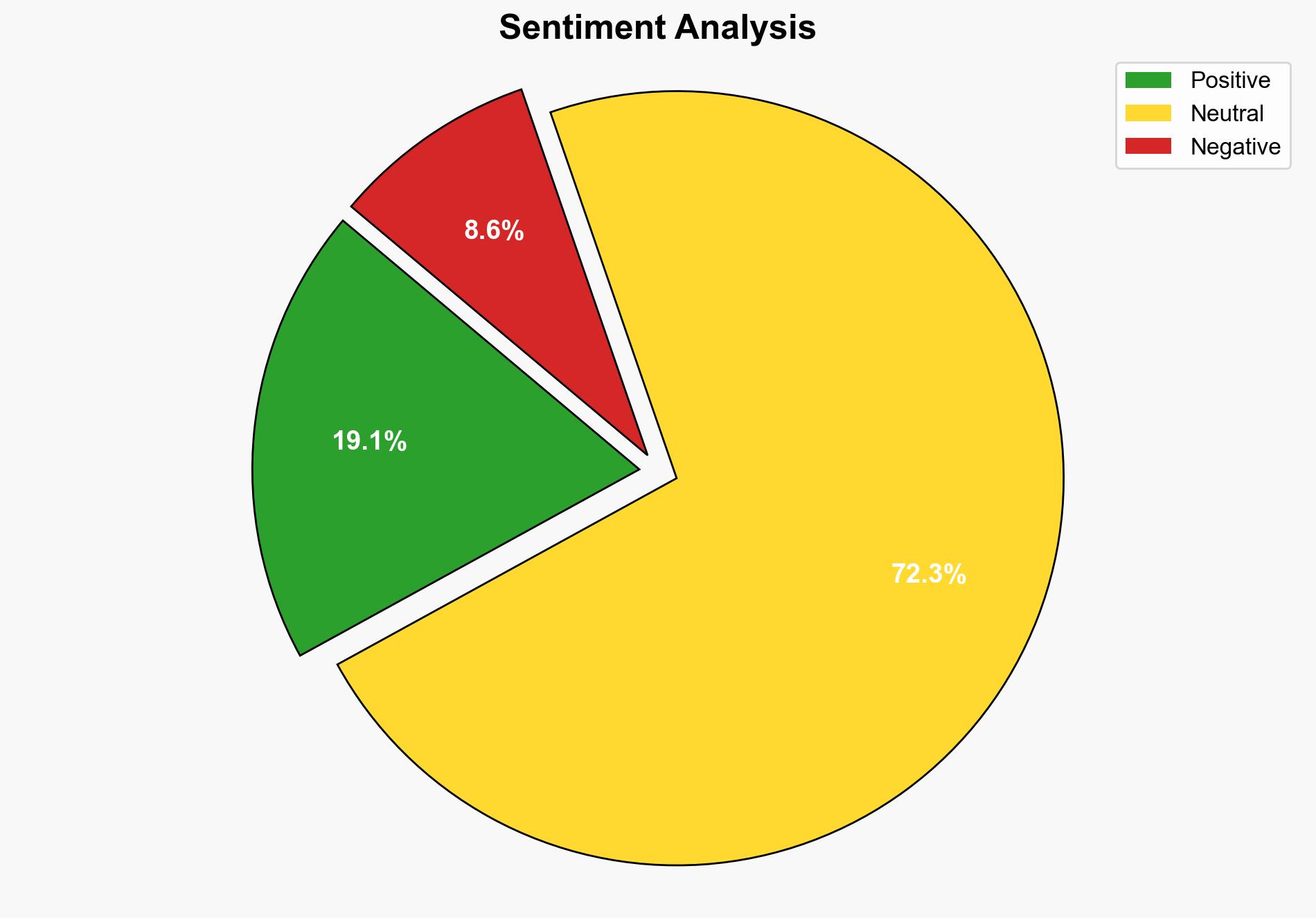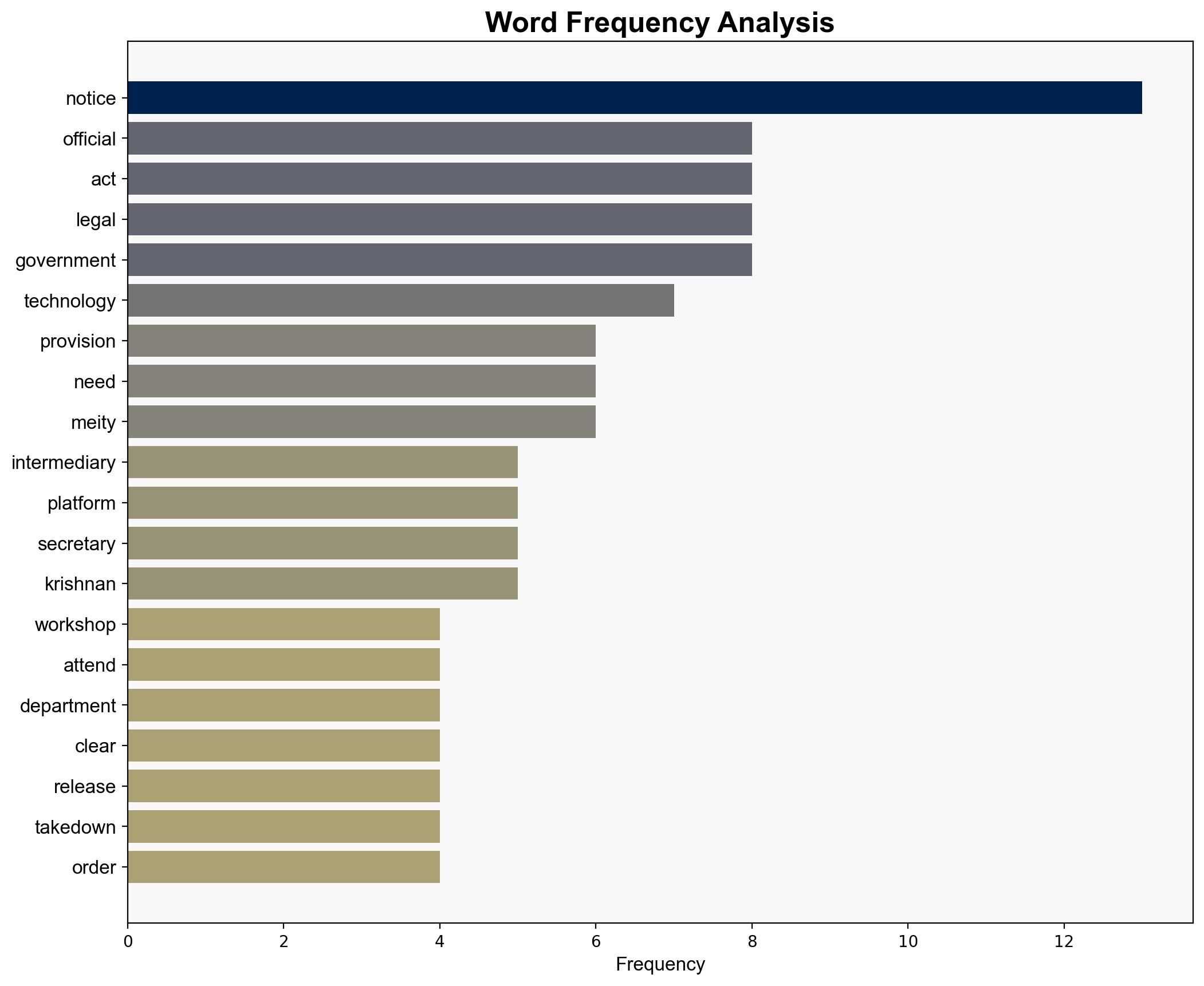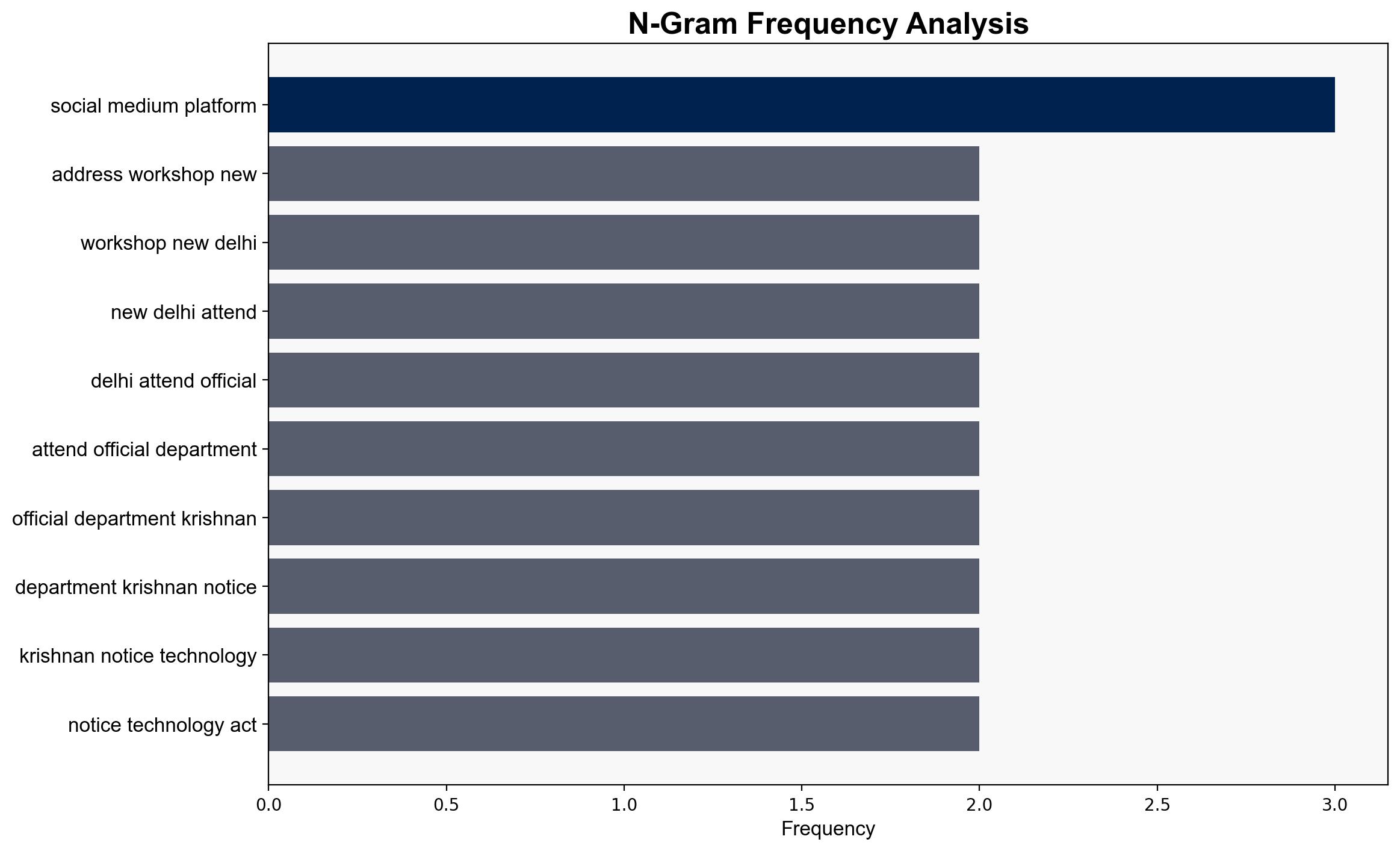Content removal notices should be sent prudently says MeitY secy – The Times of India
Published on: 2025-10-09
Intelligence Report: Content removal notices should be sent prudently says MeitY secy – The Times of India
1. BLUF (Bottom Line Up Front)
The strategic judgment is that the Ministry of Electronics and Information Technology (MeitY) is emphasizing a balanced approach to content removal, aiming to ensure legal compliance while safeguarding constitutional rights. The most supported hypothesis is that this is a response to recent legal challenges and the need for a standardized approach. Confidence level: Moderate. Recommended action: Develop a comprehensive framework for content removal that aligns with legal standards and protects fundamental rights.
2. Competing Hypotheses
1. **Hypothesis A**: MeitY’s emphasis on prudent content removal is primarily a response to recent legal challenges, such as the Karnataka High Court’s rejection of a petition against the government’s takedown orders. This suggests a need to ensure that future actions withstand judicial scrutiny.
2. **Hypothesis B**: The focus on prudent content removal is driven by a broader strategy to address misinformation and fake news, necessitating a standardized approach to maintain public order and national security.
Using the Analysis of Competing Hypotheses (ACH) 2.0, Hypothesis A is better supported due to the direct reference to recent legal battles and the emphasis on legal provisions and judicial scrutiny.
3. Key Assumptions and Red Flags
– **Assumptions**: It is assumed that the legal challenges are the primary drivers of the new emphasis on prudence. Another assumption is that a standardized approach will effectively mitigate misinformation risks.
– **Red Flags**: Potential over-reliance on legal frameworks without considering technological adaptability. Lack of clarity on how these measures will be implemented across diverse digital platforms.
– **Blind Spots**: The impact of these measures on freedom of expression and potential resistance from digital platforms.
4. Implications and Strategic Risks
– **Implications**: Strengthening legal frameworks could enhance compliance but may also lead to increased friction with digital platforms. A standardized approach could improve clarity but might be slow to adapt to rapidly evolving digital threats.
– **Strategic Risks**: Overemphasis on legal compliance could stifle innovation and expression. Failure to address misinformation effectively could lead to national security vulnerabilities and public distrust.
5. Recommendations and Outlook
- Develop a dynamic framework that balances legal compliance with technological adaptability.
- Engage with digital platforms to co-create solutions that respect both legal requirements and platform policies.
- Scenario Projections:
- Best Case: Successful implementation leads to improved legal compliance and reduced misinformation.
- Worst Case: Legal challenges persist, and platforms resist compliance, leading to fragmented enforcement.
- Most Likely: Gradual improvement in compliance with ongoing legal and platform negotiations.
6. Key Individuals and Entities
– Krishnan
– Ajit Kumar
– Ministry of Electronics and Information Technology (MeitY)
– Karnataka High Court
7. Thematic Tags
national security threats, cybersecurity, counter-terrorism, regional focus





